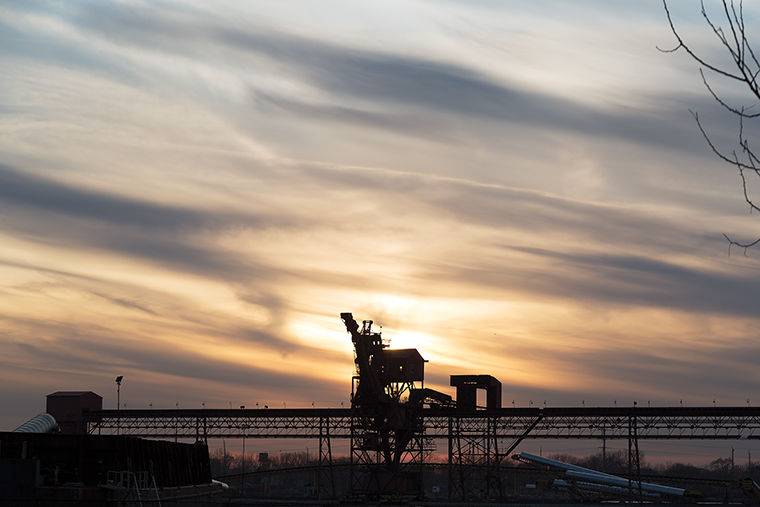Southeast Side residents’ health at risk again
Some Southeast Side community members fear a neurotoxin called manganese is in the air, which can damage the nervous system, according to the EPA.
February 20, 2017
The presence of the neurotoxin manganese in Southeast Side communities’ air has left residents frustrated with the Department of Health’s repeated lack of communication over toxins emitted from neighborhood’s industrial businesses.
Olga Bautista, Southeast Side community member, said this is far worse than the neighborhood’s previous pollution problem with petroleum coke, also known as petcoke, which lingered in the air until July 2016. The petcoke dust coated Southeast Side streets and blew into resident’s homes before the Environmental Protection Agency heightened their industrial dust regulations.
“[The community] had no idea that this was happening,” Bautista said, referring to a carbon material by-product of the oil refining process. “Everything got overshadowed with the petcoke.”
According to the EPA website, people require small amounts of manganese to function, but inhaling high levels, such as those in the Southeast Side, can damage the nervous system.
Meleah Geertsma, a senior attorney with the Natural Resources Defense Council in Chicago, said she filed a lawsuit that would require air pollution monitor installation at the facility responsible for petcoke emissions, KCBX Terminals, Inc., 3259 E. 100th St.
Her focus is now on S.H. Bell Company, 10218 S. Avenue O, which stores and processes consumer materials such as steel, silicon metal and magnesite.
According to Geertsma, manganese was recently detected in the KCBX monitors three quarters of a mile away from S.H. Bell.
“There is concern that the industry concentrated in this area is not meeting the bare legal minimum of what they are required to do with respect to their pollution,” Geertsma said.
Concern over manganese stems from studies released by the Ohio EPA and the Agency for Substance and Disease Registry, according to Geertsma. The studies included neurological assessments of residents in East Liverpool, Ohio—the location of another S.H. Bell Company facility—and compared them with those of residents in Mount Vernon, Ohio.
The evaluation, released August 2009, concluded that those living closer to the facility were exposed to higher manganese levels and had lower neurophysiological performances—such as reading scores, motor speed and strength—than people living in Mount Vernon.
As a result of the study, EPA requirements were issued to the East Liverpool S.H. Bell facility, including not allowing manganese to be handled at the facility near an East Liverpool elementary school or in open-air storage areas.
“I am extremely angry that I cannot protect my kids from these polluters,” Bautista said. “This would never happen to [political officials’] children.”
Erin Haynes, a researcher with the Communities Actively Researching Exposure study—an October 2008 through March 2013 investigation into childhood brain development and manganese in Marietta, Ohio—said her results also concluded that inhaling the toxin decreased children’s IQ scores.
Haynes said this discovery is striking because community members in Marietta were exposed to less manganese than East Liverpool at the time of the study in November 2011.
Geertsma said what happened in East Liverpool could happen to the Southeast Side because S.H. Bell facilities are not set up to control dust.
“Even when there is a lot of attention being paid to these facilities, it sounds like they have a lot of difficulty adequately controlling [manganese],” Geertsma said.
The EPA has required the S.H. Bell’s Chicago location to install four monitors by March 1. In a Feb. 13 emailed statement to The Chronicle, S.H. Bell said it is “committed” to meeting the deadline.
The email also stated that the company is one of at least 26 facilities that emit manganese within its three-mile radius, and its emission levels do not pose a threat.
“S.H. Bell believes it has a duty to comply with environmental regulations and consistently invest in best available technology in order to do so,” the email stated.
Bautista, who is also a member of Chicago Southeast Side Coalition to Ban Petcoke, said her community is being neglected by the EPA, DOPH and Mayor Rahm Emanuel. Bautista said she wants to see better communication between the government and community members whose “bodies are absorbing [toxins].”
“There was no plan for when there is a crisis like this, to alert the community,” Bautista said.








